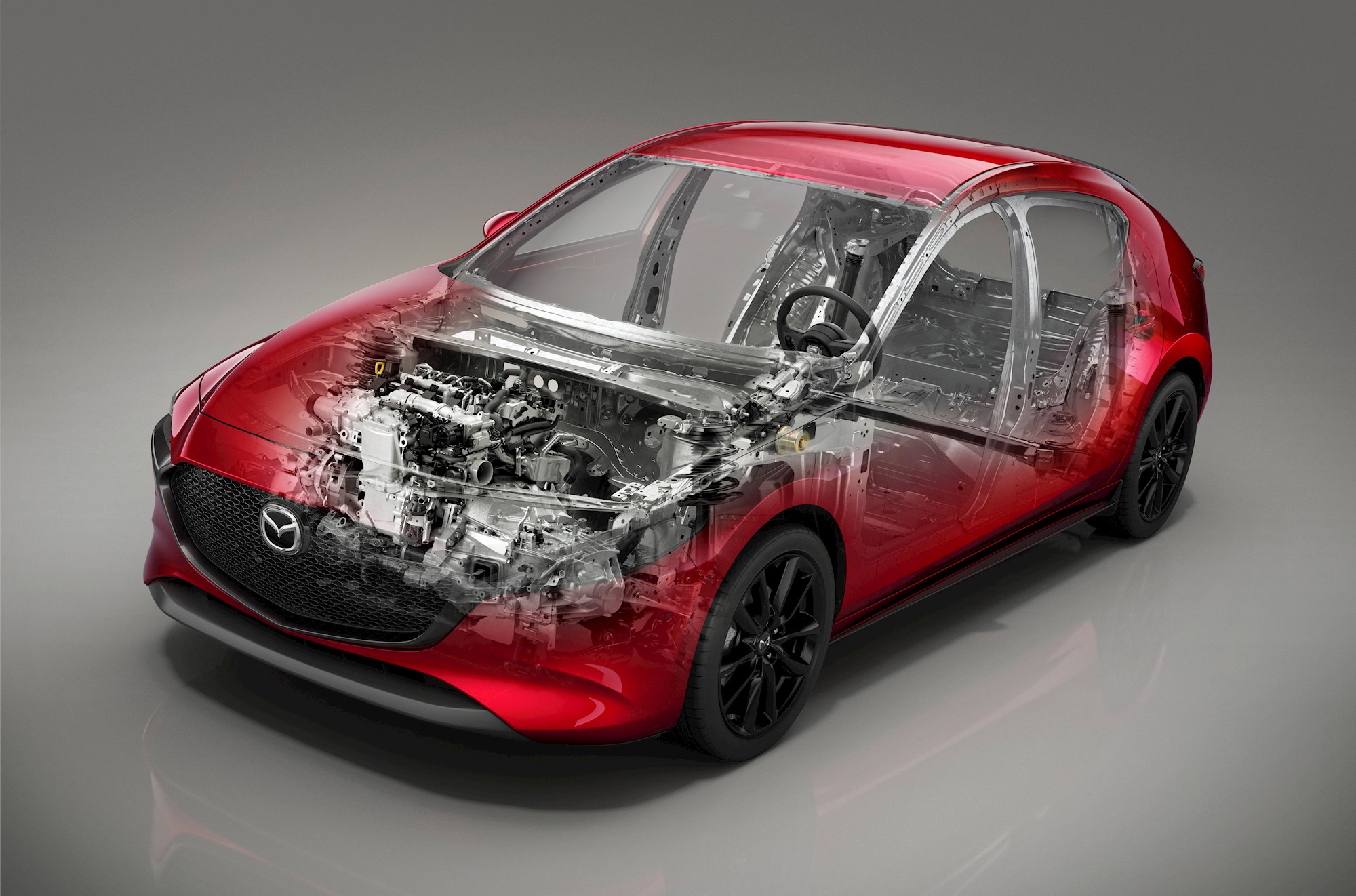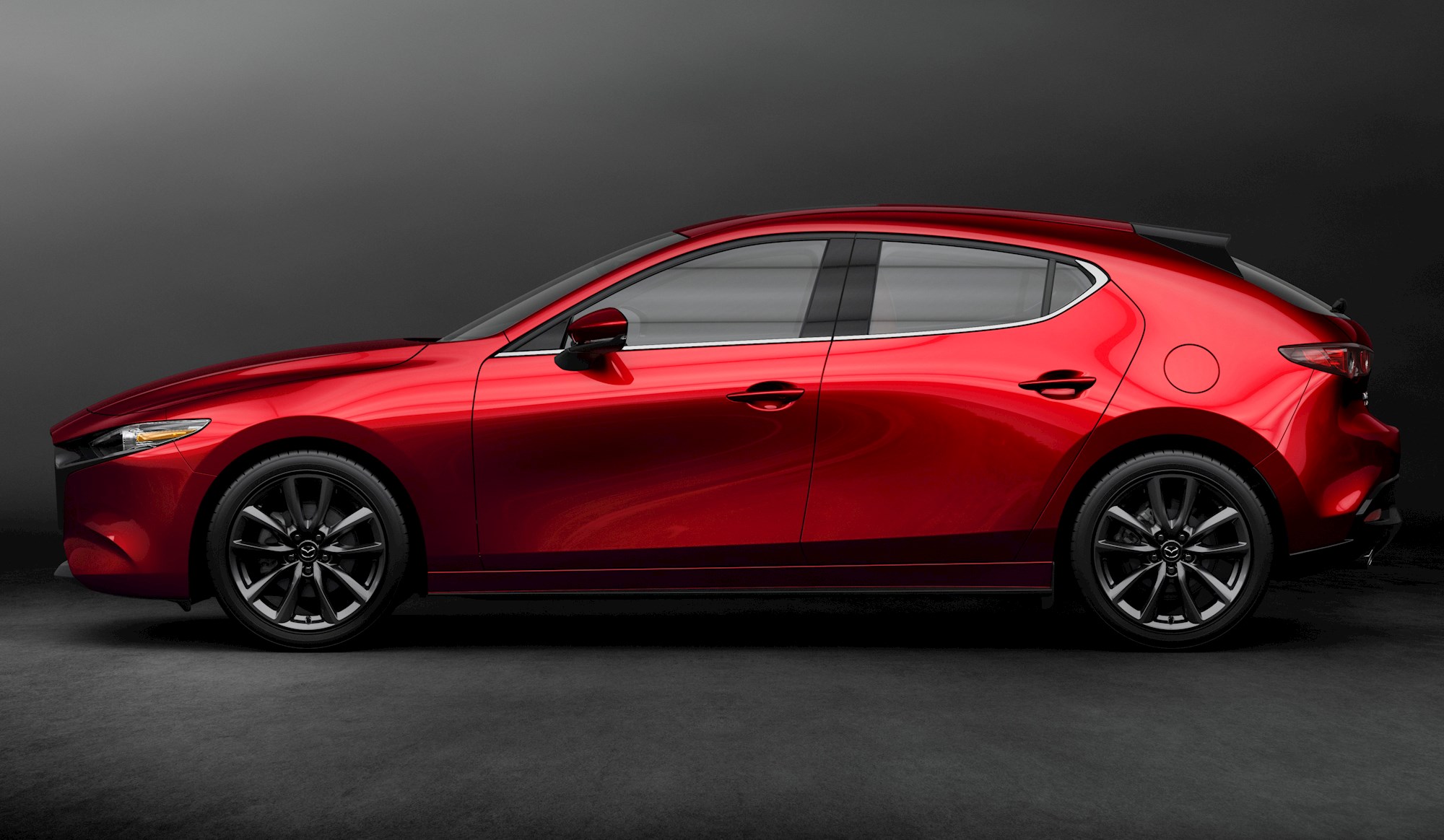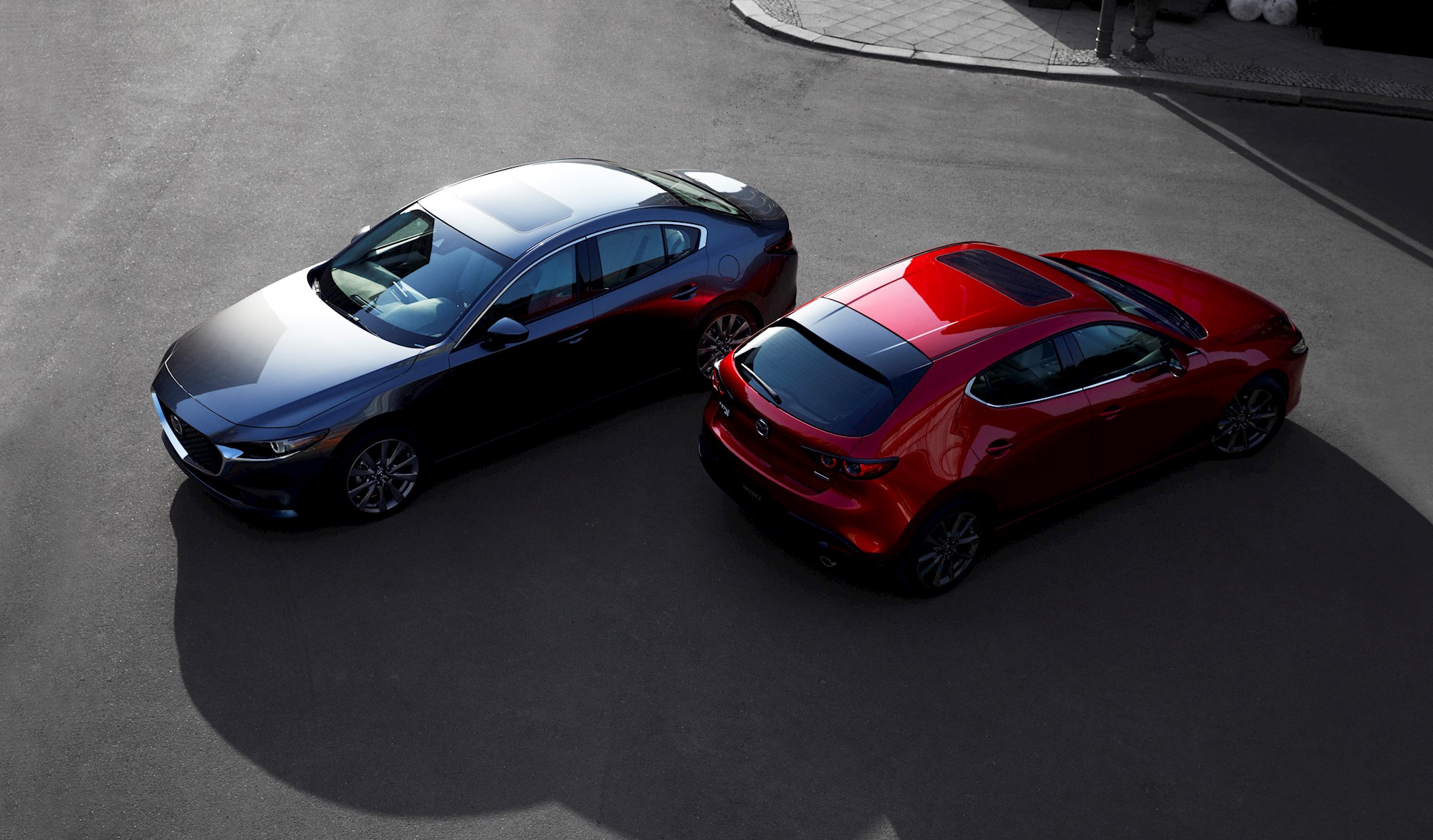Mazda Motor Corporation knew when it came to its fourth-generation Mazda3 sedan and hatchback, it needed to be bold to stand out in this popular segment. And the result? It’s gone above and beyond; from the ground-breaking exterior to the revolutionary engine.
The Mazda3 sedan and hatch will go on sale in New Zealand mid-2019 with models and specs to be announced closer to launch. Since the Mazda3’s launch in 2003, the model has sold more than six million units globally.
The Mazda3 keeps the concept car looks, but comes as a hatch and sedan plus high-tech engines.
It will have five engine types, including Skyactiv-G 1.5-, 2- and 2.5-litre petrols, a Skyactiv-D 1.8-litre diesel and the all-new Skyactiv-X, which itself is the next major technological step for Mazda.
Skyactiv-X is a petrol engine with the fuel economy and torque of a diesel. Mazda sees this engine, and the next variant of it, as its answer to electric vehicles; though by 2030, the company says 10 per cent of its model range will be EVs. The Mazda3 also gets a set of structural technologies called Skyactiv-Vehicle Architecture.

It is also the first to adopt a more mature interpretation of the Kodo design language that explores the essence of Japanese aesthetics and pursues elegant and sophisticated styling.
The original Kodo design was based on lines, but Kodo 2.0 is all about reflection, Yasutake Tsuchida, Mazda3 chief designer, told Driven at the LA motor show last week.
The night before the show opened, Mazda revealed the cars to selected globally media at a Hollywood venue. The unanimous opinion was that it was the concept car with a number plate on it.
The side of the sedan and hatch look concaved thanks in part to 12 months of work by Mazda’s clay modellers to perfect the look Tsuchida-san and his team wanted.
So the morning after the reveal, what did Tsuchida-san think of international media’s praise. “I’m very much pleased the concept car has made it to the production car,” he told Driven.

But how did he achieve that?
“We created RX Vision in 2015, and then at that time we already had how to make to the reflection from the production side,” he said.
“We already had the experience of putting the technology and the design, and that’s why we could achieve it.”
What part of the hatch and sedan was he most most proud of?
“There are two elements, first is the difference of proportion between the two, and the second one is the body side reflection.”
But there were technical challenges in keeping the body side reflection.
Yasutake Tsuchida, Mazda3 chief designer. Photo / Getty Images
“As we had the idealistic states with the concepts, the engineers put all their effort into try to make it lower. That was a very good point, that company wide, it was working well (together), how we were very much successful.”
But it was design first, then engineering?
“Rather the design team and the engineering team had a common theme, we wanted to create such a good vehicle.
“That was a common theme for us,” he said. “Talking about the vehicle, the tyre should look big and physically it should be big and look big so that if the vehicle is low down it looks very stylish.
“So that means the designers and the engineers have the same ideal mindset and also the customers have the same thing.

“So that is why we had the same common target, that’s why it was one team of Mazda that made this car.”
Tsuchida-san was asked whether he thought the Mazda3 hatchback design was risky?
“I don’t think there is a risk because the champion of the hatchback is the VW Golf. It is selling well because I think it is very rational and I think the package is good.
“Mazda is such a small player globally, less than 2 per cent, so if Mazda makes a similar vehicle to the Golf, we cannot sell a lot. We will be overwhelmed by those makers, that is why we have to be very unique is some elements.
“So this is not a risk for us at all. We regard it as a good challenge for us to show our presence.”

He said the sedan and hatch were different vehicles and would attract different buyers. The hatch will see younger buyers, and the sedan a more mature or conservative customer.
That’s an opinion shared by Mazda Motor Corp’s new president and CEO, Akira Marumoto.
He told Driven, during an interview at the LA motor show, that he prefers the Mazda3 sedan over the hatch.
“The sedan will have more volume for the US than the hatchback ... the sedan and hatchback have the sportiness,” he said.
In New Zealand, the hatchback will dominate sales, though.













